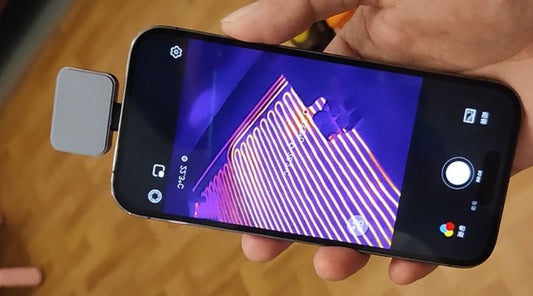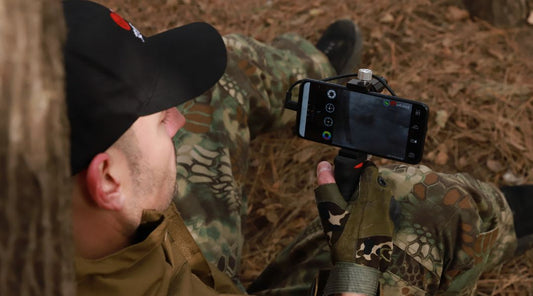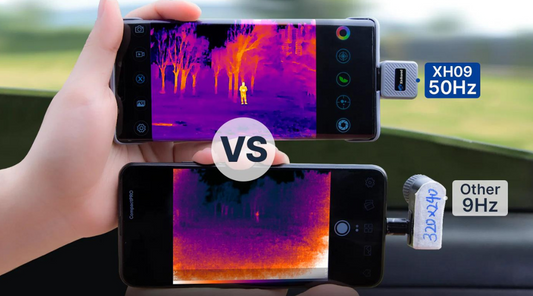Exploring Thermal Camera Field of View: What's in It for You
Thermal imaging technology has transformed the way we see and understand the world around us. From industrial applications to wildlife conservation, thermal cameras have become indispensable tools. One crucial aspect of using these cameras effectively is understanding the field of view (FOV).
Understanding Thermal Cameras
Thermal Imaging: Before we dive into FOV, let's quickly understand what thermal imaging is. Thermal imaging, or infrared thermography, is a technology that allows us to see and capture heat. Every object with a temperature above absolute zero emits infrared radiation. Thermal cameras detect this radiation, converting it into a visible image.
Applications: The applications of thermal cameras are vast, ranging from industrial inspections to search and rescue missions. These devices are used in various sectors, including manufacturing, electrical maintenance, security, and even the observation of wildlife. The key to their effectiveness lies in their field of view.
Field of View Explained
What is Field of View (FOV)
Field of view refers to the extent of the observable world that can be seen at any given moment through a thermal camera. In simple terms, it's the area that the camera captures in its image or video. Understanding FOV is crucial because it directly impacts what you can and cannot see in your thermal imagery.
Why FOV Matters
The field of view matters because it dictates the extent of your thermal camera's vision. A wider FOV allows you to capture more, while a narrower FOV focuses on specific details. It's not a one-size-fits-all concept; your choice depends on your unique needs and goals.
How FOV Affects Thermal Imaging
The FOV of your thermal camera can significantly impact your results. A broader FOV can provide a wider context, which is essential for some applications like security and wildlife observation. On the other hand, a narrower FOV might be more appropriate for detailed inspections and specific measurements.
Benefits of Optimizing Field of View
Improved Detection and Identification
By choosing the right FOV, you can enhance your ability to detect and identify objects or anomalies in your field of view. This is critical for security, surveillance, and search and rescue operations.
Enhanced Surveillance and Security
In security applications, a well-optimized FOV can make the difference between spotting a potential threat and missing it. A wider FOV covers more ground, providing comprehensive monitoring.
Cost Savings and Efficiency
For industrial inspections, a properly configured FOV can save time and resources. With a broader view, you can inspect larger areas faster, leading to increased efficiency and cost savings.
Factors Affecting Field of View
Lens Selection
The choice of lens affects the FOV. Different lenses can provide wide-angle or narrow-angle views. Selecting the right lens is crucial in optimizing your thermal camera for your specific needs.
Sensor Size
The size of the thermal sensor also impacts FOV. A larger sensor can capture more information, resulting in a broader FOV.
Distance and Angle
The distance between the camera and the target and the angle at which you view the target influence the effective FOV. Understanding these variables is essential for accurate thermal imaging.
Real-World Applications
1. Industrial Inspections: In industries like manufacturing and construction, thermal cameras with adjustable FOVs are used to inspect large equipment, detect defects, and monitor temperature variations.
2. Building Maintenance: Thermal cameras are invaluable for identifying energy leaks and structural issues in buildings. An optimized FOV helps in comprehensive surveys.
3. Wildlife Conservation: Researchers and conservationists use thermal cameras to monitor wildlife behavior. A wider FOV ensures that no crucial activity is missed.
How to Choose the Right Field of View
1. Assessing Your Needs: Understand the specific requirements of your task. Is it a wide overview or a detailed analysis? Your choice should align with your objectives.
2. Consulting with Experts: If you're unsure, seek advice from experts or manufacturers who can help you select the right camera and configure the FOV.
3. Practical Considerations: Consider practical factors like the environment, lighting conditions, and camera placement when optimizing your FOV.




